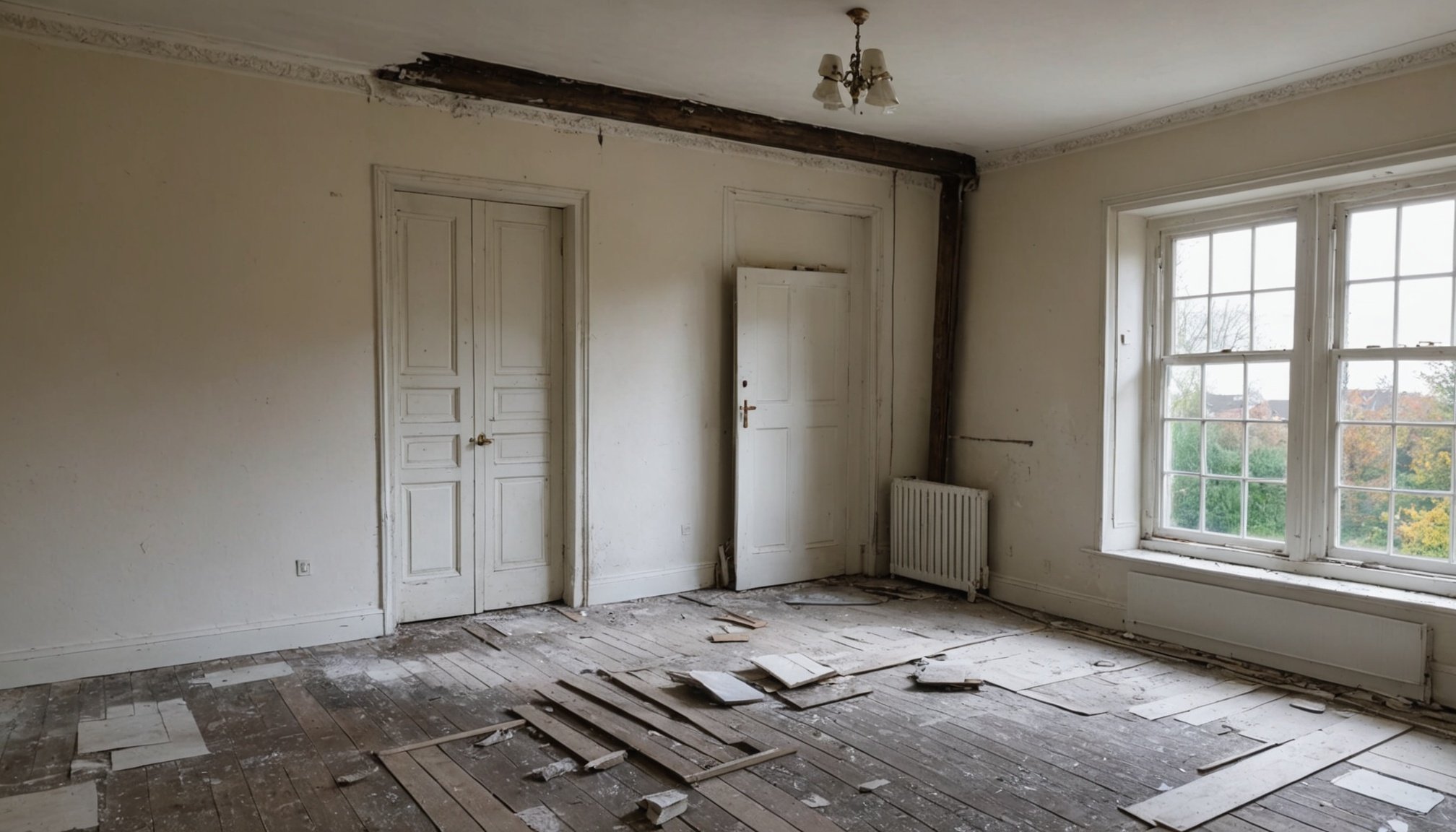Smart Strategies for Budgeting Damp and Mold Remediation Costs in UK Homes
When it comes to maintaining your home, few issues are as daunting and costly as damp and mold. These problems can arise from various sources, including poor ventilation, water damage, and inadequate drainage systems. Here’s a comprehensive guide to help you budget and manage the costs associated with damp and mold remediation in your UK home.
Understanding Damp and Mold Issues
Before diving into the financial aspects, it’s crucial to understand the types of damp and mold issues you might encounter.
This might interest you : Essential Legal Factors for UK Cohabiting Couples Investing in Property Together: A Comprehensive Guide
Types of Damp
- Rising Damp: This occurs when groundwater rises through the walls of your home, often due to a lack of or a faulty damp proof course.
- Penetrating Damp: This type of damp is caused by water entering the building through walls, roofs, or windows.
- Condensation Damp: This is the most common type and is caused by moisture in the air condensing on cold surfaces.
Types of Mold
- Black Mold: One of the most hazardous types, black mold can cause serious health issues and is often associated with water damage.
- Other Types of Mold: There are various other types, such as green mold and white mold, which can also pose health risks and damage to your property.
Assessing the Need for Remediation
Identifying the need for remediation is the first step in budgeting for these costs.
Signs of Damp and Mold
- Visible Growth: Look for visible signs of mold or damp patches on walls and ceilings.
- Musty Smell: A musty smell can indicate the presence of mold.
- Health Issues: If you or your family members are experiencing respiratory issues or allergies, it could be related to mold growth.
Professional Advice
“It’s always best to consult a professional when dealing with damp and mold issues,” says John Smith, a property manager in London. “They can provide a detailed assessment and recommend the necessary steps for remediation.”
Also to read : Mastering Mortgage Negotiations: Secure the Best Fixed-Rate Terms in Today”s UK Economic Landscape
Budgeting for Remediation
Budgeting for damp and mold remediation involves several key steps.
Initial Assessment Cost
The first step is to hire a professional to assess the extent of the problem. This can cost anywhere from £200 to £500, depending on the complexity of the issue.
Remediation Costs
Here is a breakdown of the typical costs involved in remediation:
| Type of Remediation | Average Cost |
|---|---|
| Rising Damp Treatment | £1,000 – £3,000 |
| Penetrating Damp Repair | £500 – £2,000 |
| Condensation Damp Solutions | £200 – £1,000 |
| Mold Removal | £500 – £2,000 |
| Ventilation System Installation | £1,000 – £3,000 |
| Window Replacement | £1,500 – £5,000 |
Long-Term Costs
While the initial costs might seem high, it’s important to consider the long-term benefits. Proper remediation can improve energy efficiency, reduce maintenance costs, and enhance air quality.
Cost Calculator and Eco-Friendly Solutions
Using a cost calculator can help you estimate the total costs involved in your renovation project.
Cost Calculator
Here’s a simple way to calculate your costs:
- Assessment Cost: £200 – £500
- Remediation Cost: Varies based on the type of issue (see table above)
- Materials and Labor: Additional costs for materials and labor can range from £1,000 to £5,000
- Total Cost: Sum of assessment, remediation, materials, and labor costs
Eco-Friendly Solutions
Opting for eco-friendly solutions can not only reduce your costs but also contribute to a more sustainable home.
- Energy-Efficient Windows: Replacing old windows with energy-efficient ones can reduce heating costs and prevent condensation.
- Ventilation Systems: Installing a proper ventilation system can help in reducing moisture levels, thereby preventing mold growth.
- Drainage Systems: Ensuring that your drainage systems are functioning correctly can prevent water from entering your home.
Project Management and Professional Advice
Managing a remediation project requires careful planning and professional advice.
Hiring a Project Manager
A project manager can help you navigate the process, ensuring that the work is done efficiently and within budget.
Steps in Project Management
- Initial Assessment: Hire a professional to assess the issue.
- Planning: Create a detailed plan including timelines and budgets.
- Execution: Carry out the remediation work as planned.
- Monitoring: Ensure that the work is done to the required standards.
Home Insurance and Financial Assistance
Understanding your home insurance and potential financial assistance can help alleviate some of the financial burdens.
Home Insurance
Check your home insurance policy to see if it covers damp and mold remediation. Some policies may cover the costs of repairs and remediation.
Financial Assistance
In some cases, local authorities or government schemes may offer financial assistance for home renovations that improve energy efficiency and reduce damp issues.
Practical Insights and Actionable Advice
Here are some practical tips to help you manage damp and mold issues effectively:
Regular Maintenance
Regular maintenance is key to preventing damp and mold issues.
- Check for Leaks: Regularly inspect your home for any water leaks.
- Improve Ventilation: Ensure good ventilation in your home, especially in areas prone to moisture like bathrooms and kitchens.
- Use Dehumidifiers: Dehumidifiers can help reduce moisture levels in your home.
DIY Solutions
While professional advice is often necessary, there are some DIY solutions you can implement:
- Use Mold-Resistant Paint: Painting walls with mold-resistant paint can help prevent mold growth.
- Improve Drainage: Ensure that your home’s drainage systems are functioning correctly.
Dealing with damp and mold issues in your UK home can be a significant challenge, but with the right strategies and budgeting, it can be managed effectively. Here are some key takeaways:
- Professional Assessment: Always consult a professional to assess the extent of the issue.
- Budgeting: Use a cost calculator to estimate the total costs involved.
- Eco-Friendly Solutions: Opt for eco-friendly solutions to reduce costs and enhance sustainability.
- Project Management: Hire a project manager to ensure the work is done efficiently.
- Home Insurance: Check your home insurance policy for coverage.
- Regular Maintenance: Regularly maintain your home to prevent future issues.
By following these steps and tips, you can ensure that your home remains a safe, energy-efficient, and comfortable place to live.
Additional Resources
For further guidance, here are some additional resources:
- National Health Service (NHS) Guidance: The NHS provides detailed guidance on how to deal with damp and mold in homes.
- UK Government Schemes: Check local government schemes that offer financial assistance for home renovations.
- Professional Associations: Contact professional associations like the Property Care Association for expert advice and recommendations.
By being proactive and well-informed, you can tackle damp and mold issues head-on, ensuring your home remains a healthy and happy place for years to come.
Treatment Methods and Their Costs
When addressing damp issues, selecting appropriate treatment options is crucial. Understanding costs and effectiveness helps in making informed decisions.
Chemical Treatments
Chemical treatments are frequently employed to tackle damp problems and typically involve water-repellent substances or fungicidal sprays. These treatments can be relatively affordable, ranging from minor expenses for simple sprays to more significant investments for higher-grade chemical solutions applied by professionals. Choosing the right treatment often depends on the severity of the damp and its location.
Physical Repairs
In some cases, physical repairs are indispensable when structural damage is evident. These repairs, like replacing damaged plaster or waterproofing walls, can incur higher costs. However, they also offer a long-term solution compared to temporary measures. Considering such repairs can ultimately save money by preventing recurrent issues.
Ventilation Solutions
Installing proper ventilation solutions is a sustainable prevention strategy. Options like installing vent fans or dehumidifiers help manage moisture levels, thus minimising future damp problems. The initial cost might seem high, but this solution is both cost-effective and practical over the long run.
Implementing the right prevention strategies is essential to avoid repeating problems, potentially saving homeowners both time and money. Focus on balancing immediate costs with the ongoing maintenance expenses for optimal results.











